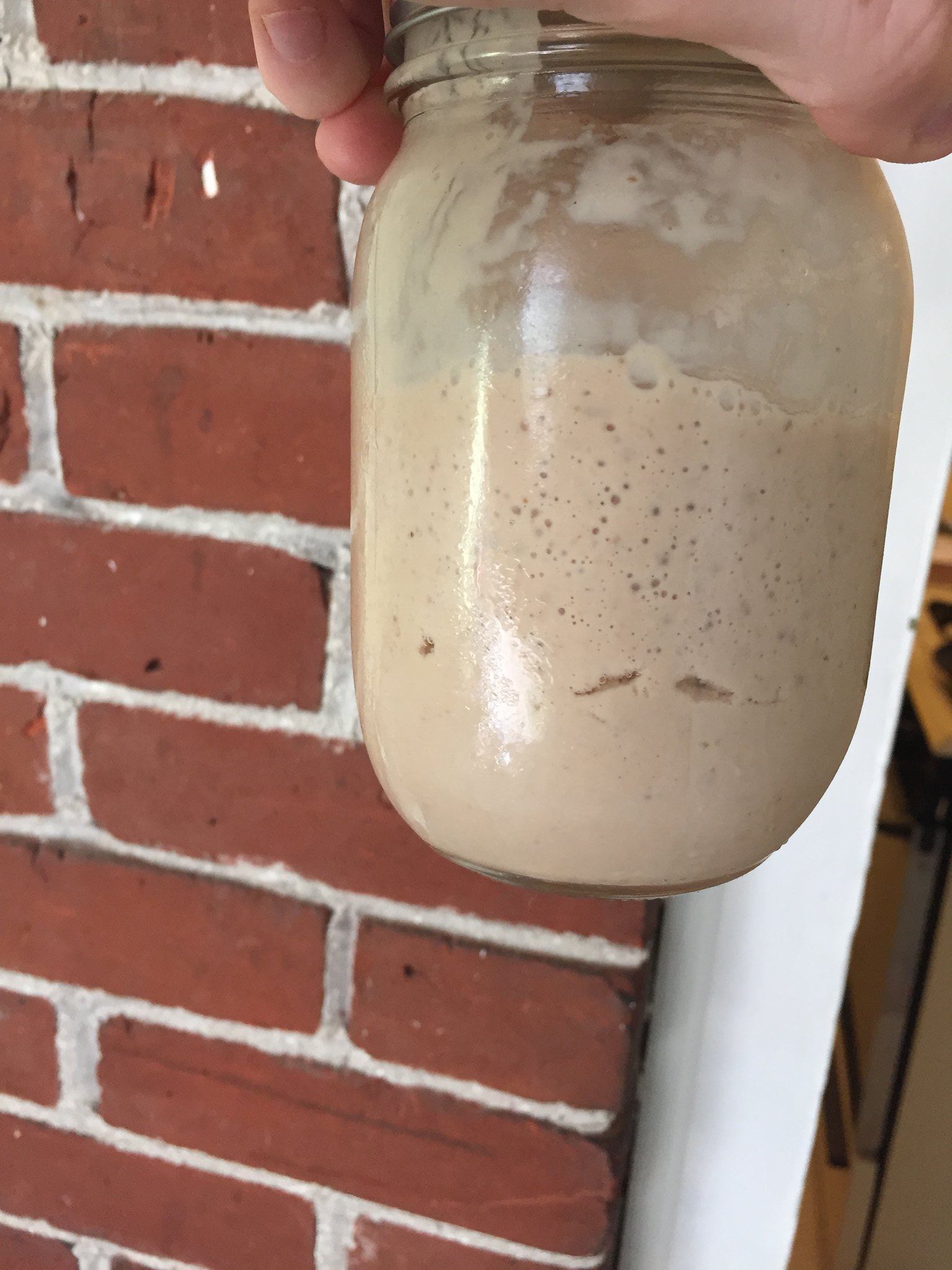+1 - it also produces more diacetyl than most other lager strains, so make sure you taste after your d-rest to make sure the level is where you want it before you start lagering.
I ended up with a mason jar with a ton of yeast (pic in link) - no idea cell count but the brewer said I would probably only need a couple tablespoons for a 5g batch. Anyone know if theres a more precise way to figure out how much to pitch? And if theres much danger is significantly over pitching?
I think I’ll try out the fast lager method so hopefully the ramp up will clean up the diacytel.
Hmm, Mr Malty’s calculator may do the trick? Not sure what to assume for non-yeast % or thickness tho.
I’d probably just pitch the whole thing. Looks like good thick slurry.
Or you could pitch half of it and save the other half for another beer.
The Mr Malty calculator can tell you approximately how much to pitch in milliliters.
Then just guess what percent of the jar to pitch. I think the whole jar too. It won’t hurt anything to pitch all of it and you’re gonna toss whatever your don’t pitch anyway.
You will need more than a “couple of teaspoons” … pitch 1/4 to 1/2 of it. You were probably talking to the cellarman, not the brewer. ![]()
It was the brewmaster, but to be fair though he may have said “a few tablespoons” haha and Mr Malty was suggesting around 5 so about in range.
I ended up throwing in the whole thing (186 grams), which according to Mr. Malty was around 600 billion cells or double what I needed. Shouldn’t hurt though right? Maybe makes oxygenation slightly less important (I did my normal stir, splash, shake)?
I have tried to over pitch into lagers, and have not been able to do so. I have put 4 to 5 times the recommened amount from Mr Malty… and had no ill effects with lagers. (my method was to brew three batches of the same recipe in series, using the yeast cake for the next. Measured in a beaker… and dumped in the next. I was looking to find out how much was too much, but when I hit over 4x the first batch… and there were no differences we could make out… I figured that was enough)
However, you can certainly under pitch. If you go half of what Mr Malty says, I think the lagers come out with noticeable differences. (fruitier/ale like, more sulfur, and took longer to clear)
I imagine there’s a point where a lager would start decreasing in quality by pitching too much, but I think its easier to lose quality by under pitching. In my last batches last winter I was pitching decanted 2L starters for 6 gallons and from personal taste and judge feedback I’m going with two 2L starters per 6 gallon batch this year.
I might get beat up on this one - but here goes:
You can overpitch, but on lagers in a homebrew situation it is very, very difficult to do. I tried it once and pitched something like a liter and a half of fresh slurry (almost the whole cake from a 10 gallon batch) into a 5 gallon wort. It took off within a couple hours at 46F and it finished very quickly, too - something like 6 days IIRC. I ramped up and then back down and transferred to keg at about day 21 or so. The beer wasn’t “bad”, but it was a bit lifeless and lacked any complexity that even a typically brewed lager tends to have. I attribute that to having too many guests at the party, so not everybody got to eat their fill/not creating the right environment for procreation necessary to get the yeast through their typical number of cycles. With fresh lager yeast, it usually takes around 340- 360 ml to do the job well and fully for my 5 gallon batches or around a beer bottle full of fresh slurry.
